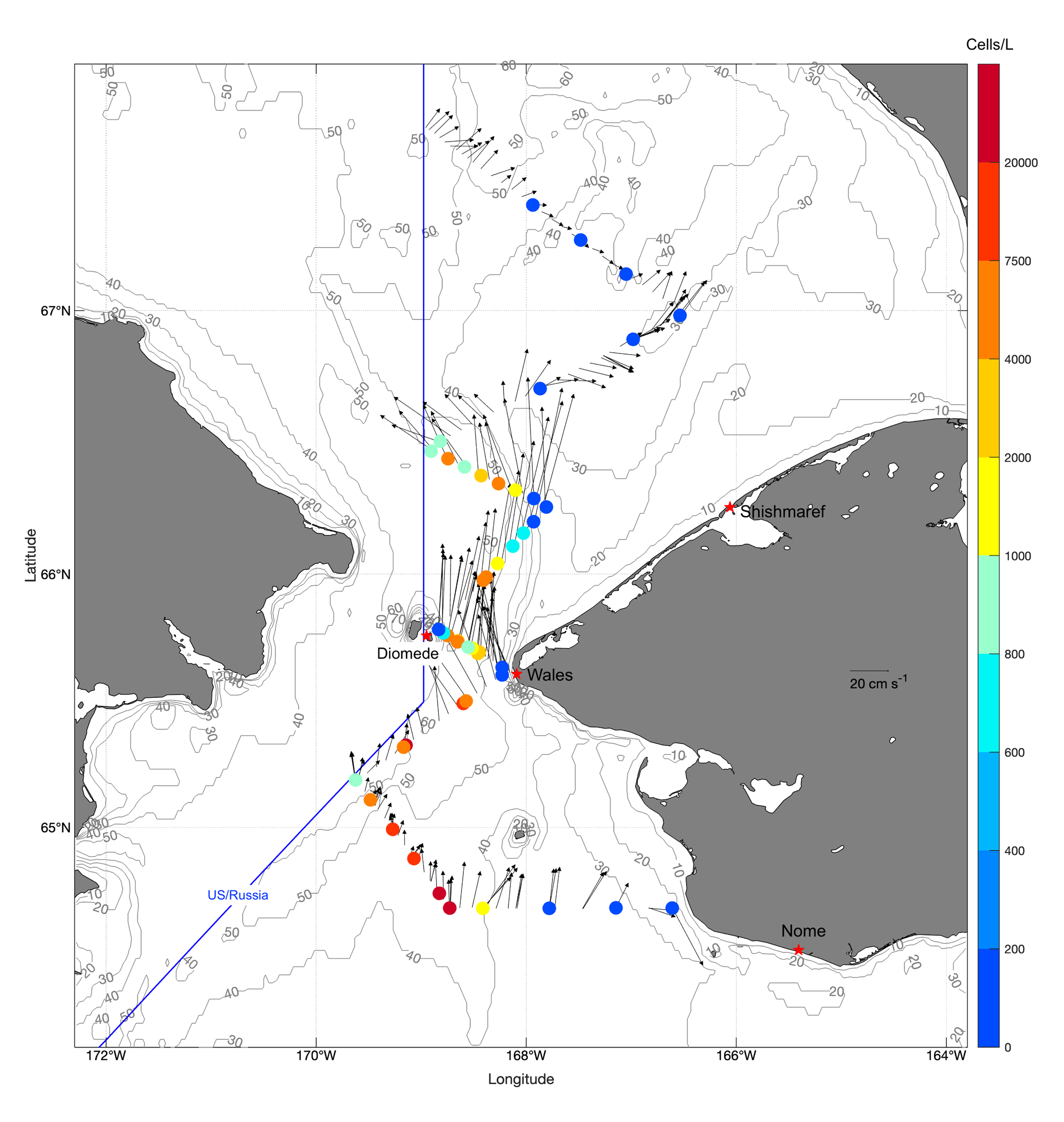One year after a record-breaking, toxic algal bloom of Alexandrium catenella in the Bering Strait region of Alaska, highly collaborative efforts led by Norton Sound Health Corporation (NSHC), Alaska Sea Grant, and Woods Hole Oceanographic Institution (WHOI) to set-up a proactive harmful algal bloom (HAB) communication plan have been put to good use.

On July 28 and 29, WHOI researchers remotely monitoring for HAB species using an Imaging FlowCytobot (IFCB) aboard the R/V Sikuliaq detected dangerously high cell counts of Alexandrium in the Bering Strait region near St. Lawrence Island, Wales, and Little Diomede. Alexandrium catenella can produce saxitoxins – powerful neurotoxins that can cause potentially life-threatening Paralytic Shellfish Poisoning (PSP) in humans, seabirds, and marine mammals. It can also accumulate in subsistence resources like clams, crabs, tunicates, krill, algae-eating fishes, and organs of marine mammals and seabirds.
In accordance with a HAB communication plan developed before the bloom season, a HAB risk advisory on the consumption of marine wildlife resources was co-produced by WHOI, NSHC, Alaska Sea Grant, and NOAA, and sent out to the 20 tribal governments in the Bering Strait region, as well as regional health clinics, and local emergency planning committees. The HAB risk advisory was printed in the regional Nome Nugget newspaper, and translated into Russian and broadcast over regional radio to reach subsistence communities across the Bering Strait region. These outlets also featured news stories on the event with remarks from HAB event responders Gay Sheffield (Alaska Sea Grant) and Emma Pate (NSHC). Sheffield and Pate have spent much of the summer traveling to coastal communities throughout the Bering Strait region doing proactive HAB outreach to answer questions and provide information to help coastal communities make informed food safety decisions during HAB events.
The Bering Strait region does not have comprehensive HAB monitoring or HAB toxin testing for subsistence foods, so cooperative efforts like these are essential to reducing HAB-related risks. With the early warning provided by WHOI and the ship-deployed IFCB, and the communication efforts led by NSHC and Alaska Sea Grant, clinics were able to prepare to provide HAB-related information and care, and community HAB monitoring efforts were increased. Additionally, HAB sampling supplies and training were provided to personnel on Norton Sound Economic Development Corporation vessels that will provide additional HAB sampling via cruises of opportunity this fall.
This work was supported in part by two HAB Event Response awards (see here and here) from NOAA’s National Centers for Coastal and Ocean Science (NCCOS). The NCCOS HAB Event Response Program provides immediate support to help state, tribal, and local officials manage events and advance the understanding of HABs as they occur.
Partner Links
